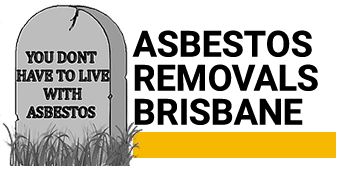

Asbestos removal methods
Have you ever wondered how asbestos is removed or the types of asbestos removal? There are many steps in the safe removal of asbestos. Also, there’s more to it than just removing asbestos. There’s also the safe disposal of the asbestos. If you’re going to have asbestos removed from your home or facility, you probably want to know what will happen, so we put together this list of the basic steps used in the removal of asbestos.
The safest asbestos removal methods for you
First and foremost, it’s important to point out that asbestos removal methods are not DIY projects. If you have asbestos that you need removed, you will need to contact professional asbestos contractors, such as Myers Asbestos Removal. We perform two main types of asbestos removal – indoor removal and outdoor removal. Since indoor removal tends to be more complicated, we decided to focus this description of the asbestos removal process on indoor removal. Here’s what the process of removing asbestos from an indoors space is like.
Inspect and test
One of the strange properties of asbestos is that it is not dangerous if it is undisturbed. The problem is that as the walls or insulation containing the asbestos ages, the material starts to breakdown and the asbestos can easily become disturbed. This can lead to airborne asbestos particles that are highly toxic. How do you know if your asbestos is becoming a safety hazard? That’s where professional asbestos inspection and testing comes in. An asbestos contractor will perform a site inspection and tests to determine what actions, if any, need to be done to deal with the asbestos.
Seal the area and negative air
If it has been determined that asbestos is present in a building and needs to be removed, the work area will be properly marked with warning signs and sealed. Thick plastic barriers and lots of industrial grade gaffer tape will be used to create an air tight work area. Air pumps with HEPA filters will be used to suck the air out of the area to create negative air pressure. This is to make sure that any airborne asbestos fibres will be trapped in the HEPA filter and not linger once the asbestos removal work is complete.
Personal Protective Equipment – PPE
Making sure the workers stay safe is a cornerstone of asbestos removal, and worker safety starts with their personal protective equipment (PPE). The workers will wear thick plastic disposable jumpsuits with hoods and elastic cuffs. Disposable shoe covers will go over gumboots and disposable gloves will be worn. The workers will also wear P2 rated particle face masks that cover the entire face and eyes.
Decontamination chamber
Before the workers can enter the asbestos removal work area, a decontamination chamber will be setup. The decontamination chamber is the place where the workers will decontaminate their personal protective equipment. There are showers and boot clearing areas in the decontamination chambers. This is also where the outside of the disposal bags containing the asbestos waste will be washed and decontaminated. All of this is meant to make sure that not a trace of asbestos will escape the work area.
The actual removal – keep it wet
Lots of water is used in the removal of asbestos to keep the asbestos wet. Wet asbestos is much less likely to become airborne. There are a number of different ways this is accomplished. It’s possible that a worker will be constantly spraying water around the work area to keep everything wet. Or several buckets of water will be available for workers to use. The actual removal of the asbestos comes down to simple elbow grease. Workers will carefully use basic tools, such as chisels and brushes, to remove the asbestos from walls or pipes.
Proper disposal
Asbestos isn’t like regular rubbish. It needs to be disposed of carefully and properly. The wet asbestos will be placed in a plastic bag that is at least 200 microns thick. That bag will be sealed, most likely with gooseneck crimpers. Then that bag will be placed in another 200-micron thick plastic bag, so all asbestos waste is double bagged. These bags will be labelled as hazardous asbestos waste and be taking to a landfill licensed to handle asbestos.
Get it done by professionals
Reminder: this list of the asbestos removal methods is not meant to be a guide. This is only meant to give you an idea of what will happen if you hire a licensed asbestos contractor. If you do need asbestos removal services, you should use an asbestos remover you can trust. Myers Asbestos Removal has the experience and the know how to safely handle any of your asbestos removal needs. If you’d like to talk with us about what we can do for you, get in touch on 0412 314 588. You can also contact us online to request a free quote.
